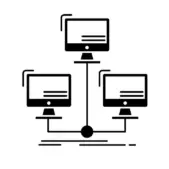Digital products succeed or fail based on how well they meet user expectations. When users encounter obstacles, inconsistencies, or confusion while navigating an app, website, or service, they experience friction. Too much of it, and they’ll abandon the experience for a simpler alternative.
One of the most effective ways to reduce friction is through customer journey mapping. This strategic UX tool helps teams visualize how real users interact with a product; highlighting not only the ideal paths but also the pain points and drop-off moments that hinder progress.
Whether you’re optimizing a single feature or mapping an entire end-to-end experience, journey mapping enables more user-centered, data-informed decisions.

What is Journey Mapping?
Journey mapping is the practice of illustrating the steps a user takes to complete a goal within your product or service. It includes key actions, decision points, potential barriers, and emotional states; all visualized in a clear, digestible format.
Unlike traditional flowcharts, journey maps focus on real human behavior. They answer questions like:
- What is the user trying to accomplish at this moment?
- What are they thinking and feeling as they move through the experience?
- Where are they likely to hesitate, get confused, or drop off?
- What’s missing that could guide them forward more effectively?
By identifying both positive and frustrating interactions across the user’s path, teams can proactively design smoother, more intuitive experiences.
Beyond the Ideal Path: Planning for Friction
Too often, journey maps only focus on the “happy path”, the ideal scenario where everything works perfectly. But great UX design anticipates what happens when things go wrong.
Let’s say a user journey includes retrieving profile information from a third-party integration. If that connection fails, how do you respond? Rather than displaying a generic error message, a well-mapped journey can highlight an alternative path — perhaps prompting the user to manually enter key details, or offering personalized support in-app.
Mapping these edge cases ensures that your product doesn’t just look good on paper; it handles real-world complexities with grace.
How to Create a Journey Map That Works
- Start With Research, Not Assumptions
Use behavioral analytics, usability testing, customer interviews, and support data to uncover how users truly engage with your product. Don’t rely solely on idealized flows or internal expectations. - Build Data-Informed Personas
Create realistic, inclusive personas that represent your key user segments. These should include more than demographics — focus on goals, pain points, and emotional context. - Map Actions, Thoughts, and Emotions TogetherFor each stage of the journey, capture:
- What the user is doing
- What they are thinking
- How they’re feeling
- What they expect to happen next
- Where there’s friction or uncertainty
- This multi-dimensional view helps teams design with empathy and precision.
- Include Multiple Channels and Devices
Modern user journeys span web, mobile, desktop, and even customer support interactions. Your map should reflect cross-platform continuity, not just isolated in-app behavior. - Visualize Outcomes and Opportunities
Use collaborative tools like Figma, Miro or journey mapping platforms to visualize the experience. Then layer in opportunities for improvement, conversion moments, and automation or support triggers.
Putting Journey Mapping into Practice
Journey mapping isn’t just a one-time planning tool — it’s a living asset that guides product decisions, content strategy, and cross-team alignment.
Use it to:
- Validate new features before development
- Refine onboarding and retention flows
- Personalize experiences based on real behavior
- Align product, design, marketing, and support teams around user goals
The best journey maps don’t just eliminate friction — they intentionally design for clarity, empathy, and momentum.
Empowering Better Experiences Through Journey Mapping
Understanding your users means more than knowing what they click. It means recognizing what they feel, what they expect, and what might cause them to leave — or stay.
Journey mapping helps you anticipate problems before they surface and resolve them with thoughtful, user-first solutions. It’s a powerful framework that bridges insights and action, turning complexity into clarity.
At UpTop, our UX researchers, designers, and strategists work with clients to uncover hidden pain points, validate design decisions, and create journeys that deliver on both user expectations and business outcomes.
Let’s connect to explore how journey mapping can enhance your digital experience and reduce UX friction.


